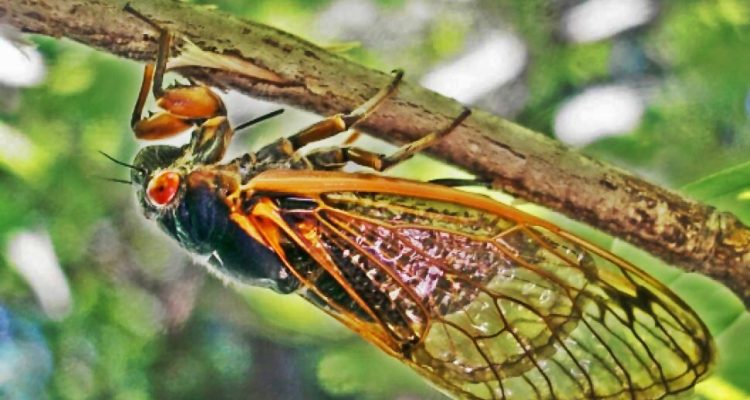It was 16 years ago when we last heard that deafening buzz and saw their red eyes and orange veins, but those sights and sounds are set to return next summer in the Upper Ohio Valley region.
Hundreds of thousands of Periodical Cicadas are set to invade the region next July, and local educator Dr. David Mallow explained the reasons for that buzz, the reproductive process, and the life cycle adopted by this species over the history of Planet Earth.
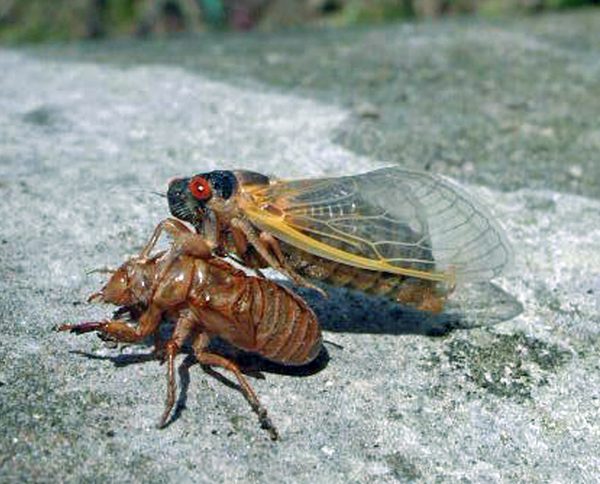
“When I hear that sound, I know there are hundreds of thousands of males screaming out in the effort to get lucky,” Mallow said with a chuckle. “That’s what it’s all about, and the ones that survive will probably be here for a year or two after that.
“The main reason they can make so much noise is because they have this membrane that vibrates, and they are pretty hollow, so that sound really resonates. To house the internal organs that they have, they really don’t need that much of a body, but having that resonating chamber inside is what allows the species to survive.”
The chair of the science department at The Linsly School who came to Wheeling in 1984, Mallow explained that over the last 50 years this area has experienced the Periodical Cicadas in 1999, 1982, and 1965. Those old enough not only recall the maddening mating calls but also the “shells” and the many holes in the soil. As part of the process the Periodical Cicadas burrow as deeply as a foot into the Earth.
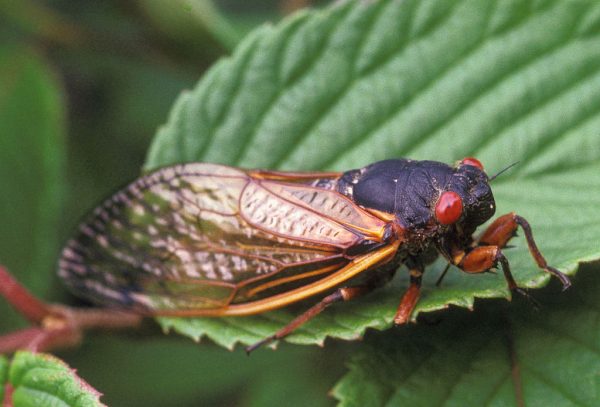
“They do come out of the ground, but the process begins with the male and the female, and then the female will scrape a little groove in tree branches and lay the eggs. The eggs hatch, and they feed off the sap of the tree until they enter the nymph stage and then fall to the ground,” Mallow said. “Then they burrow into the ground and start feeding off what they can get from the tree’s root. But that’s mostly water, so they are not getting enough nutrients to push up the life cycle.
“It’s a struggle for them under the ground, but they do get enough to survive until it’s time to climb back out of the ground and reproduce,” he continued. “Once they are out of the ground, they manage to crawl back up those trees, and they shed the shells that actually their outer skeleton. Those are called the ecdysis.”
Mallow said the life cycle of the Periodical Cicadas has been developed over thousands, if not millions, of years with one goal – long-term survival of the brood.
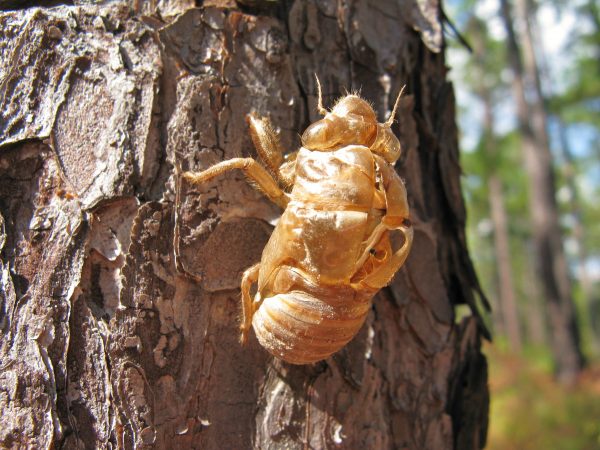
“One of the things that is really interesting about the 13- and 17-year cycles is that 13 and 17 are both prime numbers, and I believe that means mathematics are playing a factor as to why these insects have evolved into the cycles that they have practiced for many, many years.
“But the reason that so much time is in between the times when they do come out is to throw the predators off. That way those predators can’t depend on that many being around in order to feed and survive, and that means those predators have to find something else to depend on,” he continued. “When the Periodical Cicadas do come out in such numbers, they saturate the area, and the predators do get their fill, but so many of the cicadas survive that they can keep that cycle going. They are pretty big so some mammals will take them and so will some of the bigger birds that we have in this area.”
And yes, Mallow confirmed that he, too, has been forced to clean away the remains of those cicadas that collided with his car, but the scientist offered good news for fellow vehicle owners.
“The good news for those in the area that own vehicles is that if they run into them on the roadways, the remains are no worse for their cars than any other insect is,” he said. “Because they are bigger, it will make more of a mess than a mosquito, but there’s nothing in their chemistry that would eat paint or anything like that.”
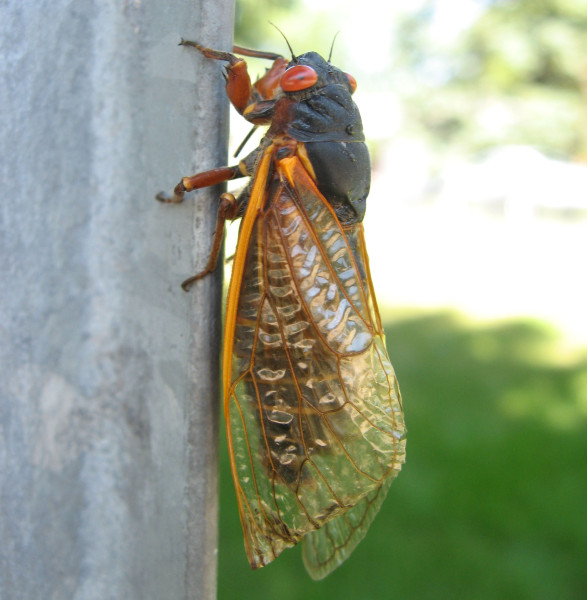
Mallow recalls the infestation in 1999, and he expects nothing more or less in 2016 because of how the species has evolved over the years. While many of the southern states in the eastern United States are visited by Periodical Cicadas every 13 years, the Mid-Atlantic region’s cycle extends to 17 years.
“I didn’t think the last time it was really that bad, but I’ve also seen it in other regions of the country when there were so many of them that it looked like it was snowing,” Mallow recalled. “We should probably expect about the same as what we saw 16 years ago, and the soggy weather we’ve had this year isn’t something that will decrease or increase the number of them. The cycle is so engrained in their genetics by now that a lot of precipitation isn’t going to change what we are used to in this area.
“It was loud; that’s for sure, but for me with the education and background that I have, I was in Heaven,” Mallow said. “I know people are bothered by the noise and by how many there are, but I know that it’s all about reproduction. There are cicadas that come out every year, and they are called the ‘Dog Day Cicadas’ because they emerge in July and August during the dog days of summer,” he explained. “But the ones that we will experience next year at this time are called the, ‘Periodical Cicadas’ because they came out every 13 or 17 years.”
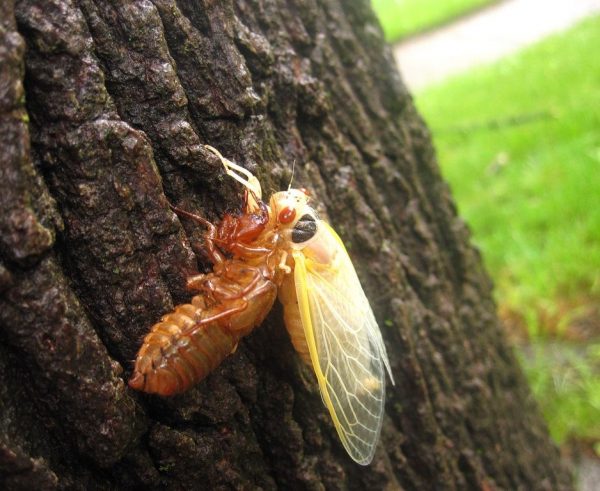
Those who were residing in this region in 1999 likely came into direct contact with one of more of the cicadas since the insects do possess the ability to fly. Their presence will be felt in both urban and rural regions with populations proving more prevalent in areas with more trees.
“The Periodical Cicada is a pretty good flyer, but the wasps and bees and flies are the best flying insects, and compared to them these cicadas kind of lumber around, but they do get around,” Mallow said. “But in terms of migrating thousands of miles, they are not capable of that by any means, so no one should expect them to just fly away to another area. They don’t do great distances, but they get around pretty well as lot of people will tell you.
“Their ability to fly is key to their survival because they feed off the sap of the trees because they have a piercing mouth part called a proboscis that allows them to get to it once they land on a tree,” he said. “If they bite someone, it’s by accident, and I have never heard of a scenario where anyone has ever been allergic to that bite because they are not venomous.”
The Periodical Cicadas will emerge from the ground once spring temperatures warm into the mid-60s to finish the maturation process. At that point mating season will begin with both males and females with the ability to mate more than once. Six to 10 weeks later the eggs hatch, and the cycle begins again.
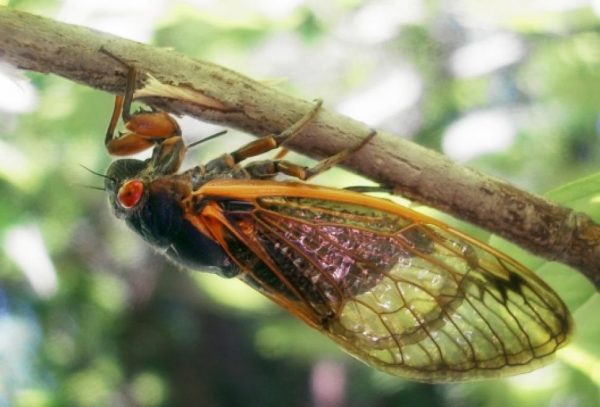
“I am looking forward to it because I always think it’s pretty cool,” Mallow said. “I am into the science and the Periodical Cicadas are definitely managed by many of the Earth’s sciences, and it will be a great opportunity for me to teach my students the difference between what a cicada is and what a locust is.
“Every time the cycle arrives, people seem to confuse the cicadas with locusts, but they are two completely different insects. The cicadas belong to the taxonomic order Hemiptera, and the locusts belong to the Orthoptera order,” he said. “But the cicadas are coming, and it will be a great chance for people to learn a lot about how this part of our world continues to survive.”


